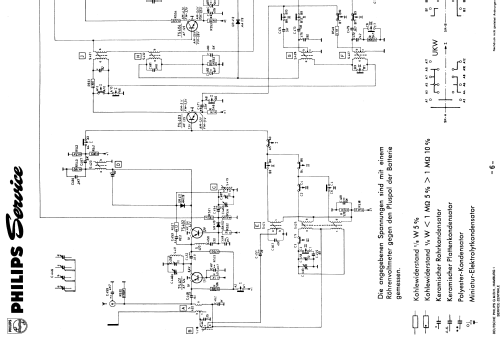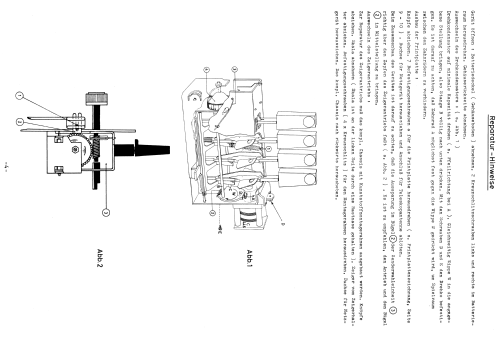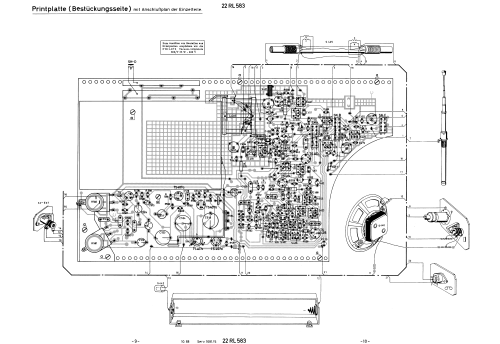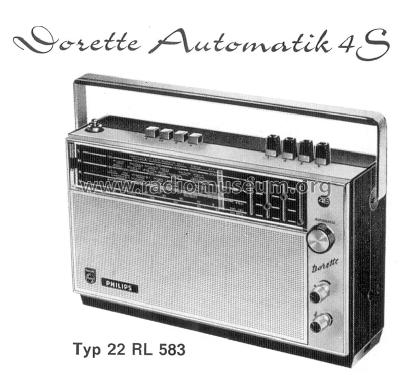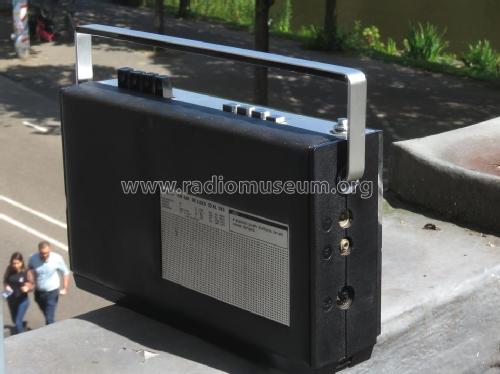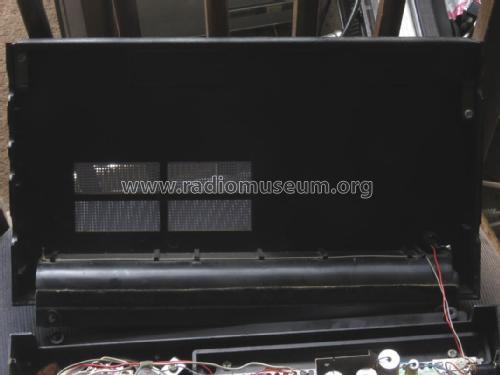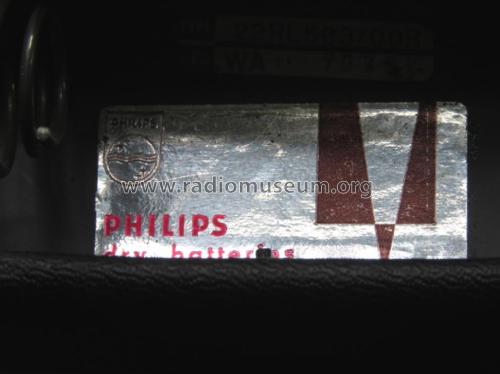Dorette Automatik 4S 22 RL 583
Philips Radios - Deutschland
- País
- Alemania
- Fabricante / Marca
- Philips Radios - Deutschland
- Año
- 1968
- Categoría
- Radio - o Sintonizador pasado WW2
- Radiomuseum.org ID
- 204476
-
- Brand: Deutsche Philips-Ges.
Haga clic en la miniatura esquemática para solicitarlo como documento gratuito.
- Numero de transistores
- 10
- Principio principal
- Superheterodino en general; ZF/IF 460/10700 kHz
- Número de circuitos sintonía
- 6 Circuíto(s) AM 8 Circuíto(s) FM
- Gama de ondas
- OM, OL, OC y FM
- Tensión de funcionamiento
- Baterías recargables o pilas / 4 × 1,5 Volt
- Altavoz
- Altavoz elíptico de imán permanente. / Ø 10 cm = 3.9 inch
- Potencia de salida
- 0.8 W (unknown quality)
- Material
- Plástico moderno (Nunca bakelita o catalina)
- de Radiomuseum.org
- Modelo: Dorette Automatik 4S 22 RL 583 - Philips Radios - Deutschland
- Forma
- Portátil > 20 cm (sin la necesidad de una red)
- Ancho, altura, profundidad
- 310 x 190 x 95 mm / 12.2 x 7.5 x 3.7 inch
- Anotaciones
- Betrieb mit vier Monozellen. Vier Stationstasten zur Speicherung von vier Frequenzen (mechanisch)
- Peso neto
- 2.4 kg / 5 lb 4.6 oz (5.286 lb)
- Procedencia de los datos
- -- Original-techn. papers.
- Autor
- Modelo creado por Jürgen Putzger. Ver en "Modificar Ficha" los participantes posteriores.
- Otros modelos
-
Donde encontrará 2544 modelos, 2256 con imágenes y 1566 con esquemas.
Ir al listado general de Philips Radios - Deutschland
Colecciones
El modelo Dorette Automatik 4S es parte de las colecciones de los siguientes miembros.
Contribuciones en el Foro acerca de este modelo: Philips Radios -: Dorette Automatik 4S 22 RL 583
Hilos: 1 | Mensajes: 3
Das Gerät ist schon länger bei mir, ein Reparaturbericht fehlt aber. Es hat neu konstruierte Zargen, die die Gehäuseteile zusammenhalten. Die sind sicher von mir. Das Radio macht keinen Mucks, es zieht nur viel zu viel Strom. Die Endtransistoren werden heiss. Philips hat am Anfang der Siebziger Jahre Platinen verwendet, die überaus fragil sind. Darum will ich die Platine gar nicht erst von der Trageplatte entfernen. Ich entscheide mich stattdessen für roh und grob. Die Füsse der beiden Endtransistoren werden abgezwackt – der Stromverbrauch fällt auf 20mA. Statt der alten AC127 / AC128 löte ich von oben aus AC187 / AC188 ein, klicke sie ins Kühlblech – und voilà! das Radio läuft.
Bruce Cohen, 22.Jun.20
